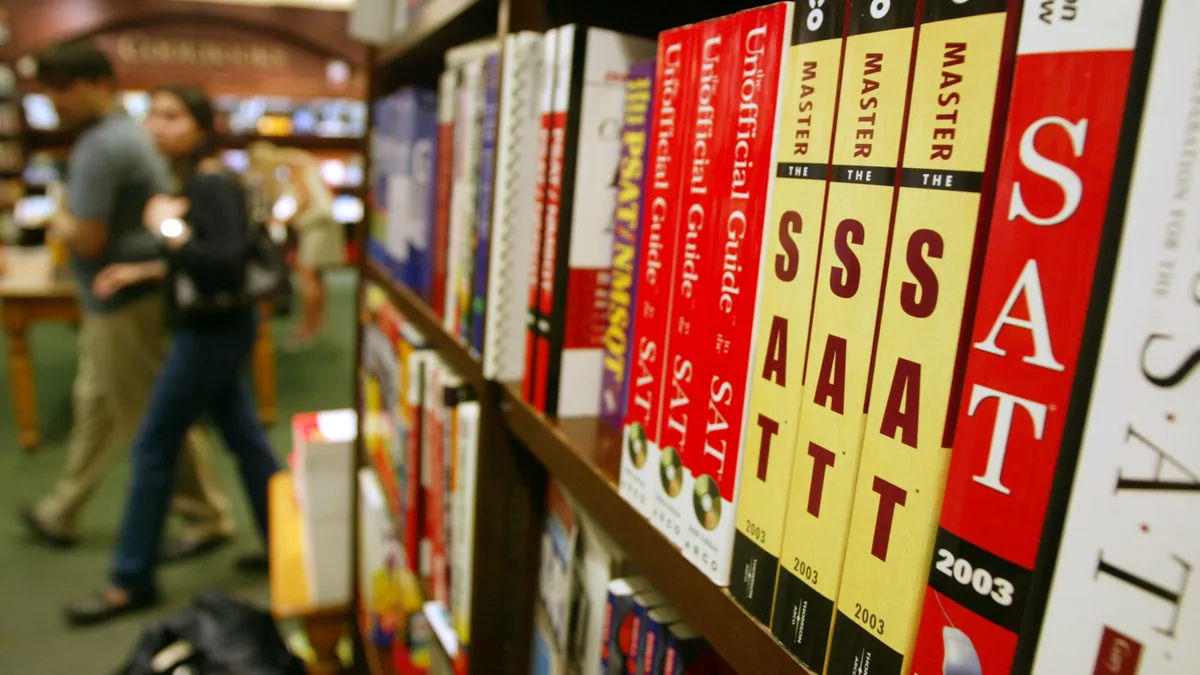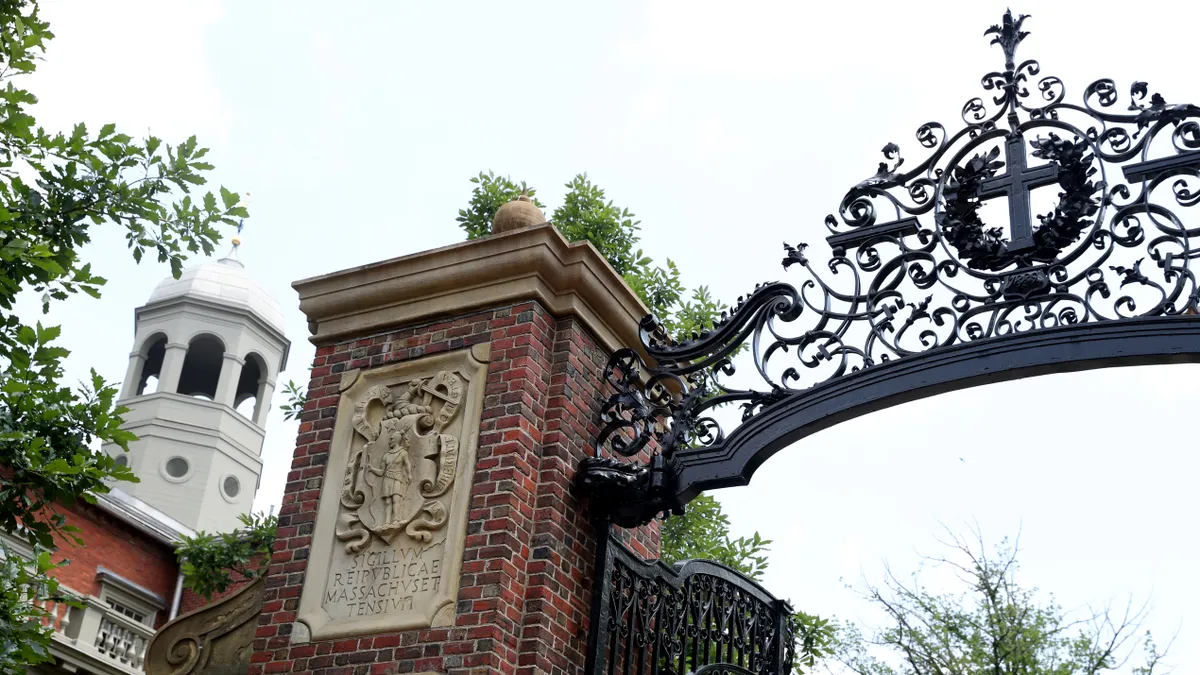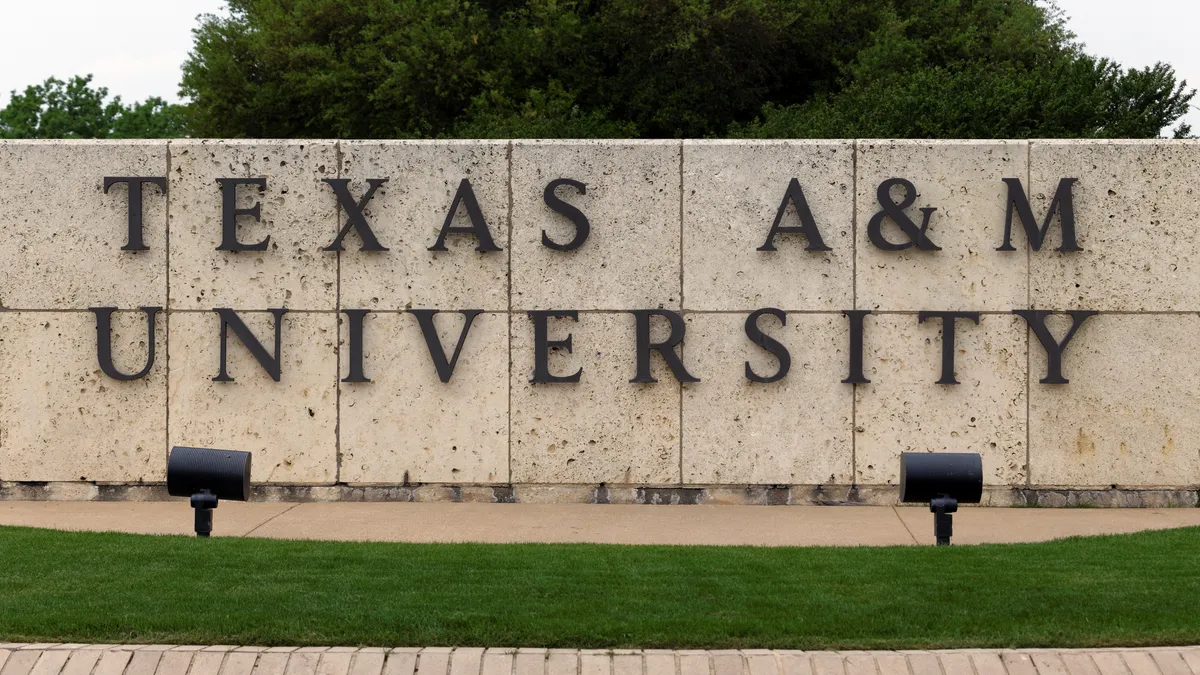It's a day many college enrollment managers love to hate: The annual publication of U.S. News and World Report's Best Colleges rankings. The hierarchy seldom shifts significantly, and its flaws are well-documented. But the rankings are still influential in students' search processes and institutions' strategic plans.
This year, higher education groups, including the National Association for College Admission Counseling, had hoped U.S. News would make one change, though — ridding the SAT and ACT from its methodology.
It did not. Standardized test scores remain 5% of the rankings formula. This percentage has declined over time.
But next year's rankings may be different. This year's release still reflects a test-taking period that occurred largely before the dawn of the health crisis, from 2019 to early 2020. The pandemic forced testing sites to close and meant many students couldn't sit for the exams. Only 1.5 million students in the high school class of 2021 took the SAT at least once, a major drop from the 2.2 million who took it in the 2020 class, according to the College Board, which runs the test.
Many colleges responded by no longer requiring admissions tests, either permanently or temporarily. Nearly three-quarters of bachelor's degree-granting institutions are test-optional for fall 2022, including those that didn't require tests pre-pandemic, according to FairTest, an organization advocating for more equitable applications of assessments.
An even more surprising trend on the admissions landscape was the number of schools that are newly declining even to review scores, an approach known as test-blind or test-free. Big names like the California Institute of Technology and the University of California System adopted these policies during the pandemic. More than 80 institutions are test-blind now, albeit some provisionally, like CalTech, when a few years ago there was only a couple.
Some higher ed leaders and pundits believe this combination of the assessments' weakened role in admissions, and public pressure, will force the publication to nix the scores.
"It's a stubborn adherence to a flawed measure," said Bob Schaeffer, FairTest's executive director.
Campaigns ramping up
It's first notable that the movement calling for the magazine to remove test scores is so visible. NACAC, the top admissions trade group, signed on to it. Although the organization has made this request three times before, it had not done so during a period when so many institutions were adopting test-optional and test-blind rules — and when criticism of the SAT and ACT has reached new levels.
Opponents of the tests argue they favor White, affluent students and that extracting them from admissions would bolster the diversity of campus bodies. This critique gained new relevance amid a racial reckoning in the country last year that accentuated such inequities.
The College Board did not respond to a request for comment. It previously told Higher Ed Dive that although "real inequities" exist in American education, the "SAT itself is not a racist instrument."
Colleges have historically relied on test scores because they distill a complex concept, academic prowess, into a metric that is easily explained and marketable to students and families, said Jay Rosner, executive director of the Princeton Review Foundation, which helps underrepresented students prepare for standardized exams.
"We can see which number is better, and it enables colleges to say: 'I have a better average incoming freshman test score than you, my university is better than yours,'" Rosner said. "Which is absurd."
U.S. News preserved the scores in the methodology but said it made tweaks to acknowledge the growth in test-optional policies. Typically, if three-fourths of a new class does not submit scores to a college, the publication will scale back the weight SAT and ACT in its placement by 15%. This year, it lowered that threshold, to half of students.
This adjustment did little to assuage critics, who said it didn't solve the fundamental problems of the test scores' inclusion. And some were riled because the magazine continues to assign test-blind schools a "value equal to the lowest test score" in their respective categories. U.S. News didn't rank test-blind schools at all before last year.
Colleges could be dissuaded from piloting test-blind policies if they know they effectively will be punished, said Stephen Burd, a senior writer and editor at New America. The left-aligned think tank is one of the organizations pressing the magazine to no longer incorporate the scores.
Assigning test-blind institutions the lowest score was "done out of fairness," Robert Morse, chief data strategist at U.S. News, said in an email. It prevents these schools from scoring higher than ones using the SAT and ACT.
It's not clear how much consideration U.S. News has given to the idea of eliminating test scores. Morse, asked whether scores will persist in the methodology, said U.S. News doesn't announce upcoming changes to its formula this early.
But Rosner said he doesn't believe the momentum of schools moving to test-optional policies — and more importantly, those going test-blind — will be curtailed after the pandemic.
"I cannot see U.S. News being able to include a test score component and give it any substantial weight," he said.
A needed sea change
NACAC's chief executive, Angel Pérez, also doesn't think colleges should be rated based on students' skill on a test. In his mind, it's like crediting hospitals that admit the healthiest people. And colleges should also be serving not just the financially healthy but those who are low-income and first-generation students.
However, he worries a sea change is needed among students and families for U.S. News to pay attention to calls to remove the tests. Too often, applicants feel the tests are needed when applying to college, he said.
Several months after the swaths of colleges started switching their admissions policies, NACAC created a "test-optional means test-optional" campaign asking institutions to affirm that students truly wouldn't be penalized for not submitting scores. It was a reflection of students' concerns, Pérez said. More than 500 colleges have signed NACAC's statement.
Colleges too have a role in diminishing testing's significance in a way that might force the magazine's hand. But sometimes they have announced test-optional policies that are ambiguous and confusing for students to interpret. Some signaled officials still valued the scores even though they would allow students to apply without them.
Schaeffer also accused U.S. News of peddling false information about colleges' testing policies. As an example, Schaeffer pointed to its profile of top-ranked Columbia University, which the publication states requires either the SAT or ACT for admissions. And right now, Columbia is temporarily test-optional.
U.S. News receives this information directly from colleges, Morse said in his email.
But in Schaeffer's view, "it's not hard to keep this information up to date. It confuses applicants at best."
A statement from the ACT also seemed to suggest scores have no place in the rankings. It said that while the "assessment offers a valid and trustworthy measure of a student’s individual academic readiness, it was never intended for use as a measure of institutional prestige or quality."
The ACT remains "a significant and appropriate part of the college-going process," but the sector should seek out new and more effective tools that allow students to measure success and completion, the statement said.






















